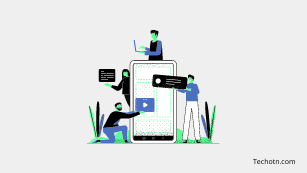Budgeting applications are mobile apps that help users care for their finances. When all bank cards, accounts, and e-wallets are stored, collected data is analyzed and systematized to help users track and observe their expenses on diagrams and charts. Budgeting apps can help you invest, control your spending, save money for a huge purchase, and tackle tax charges.
These financial applications include Personal Capital, Mint, YNAB (You Need A Budget), Stash, Digit, and more. According to Epam Anywhere Business creating a finance app is not a straightforward process. It involves many crucial steps. This piece teaches you how to build a personal finance app that wins the competition!
Read: How To Build a Financial App – The Beginner’s Guide
How to Build A Personal Finance App That Wins Competition
Here are the steps to follow to create your own budget app:
Step One: Develop And Verify a Prototype
The first step to creating a personal finance app is to design and verify a prototype. Many users today will quickly exit applications that do not excite them. So, it would be best to consider this when creating your app. Try not to give them the usual. And if you are, make it unique to your brand.
An excellent way to start is to add some gamification features. These things will let your target audience return to your app. Regarding your UI, you must improve your design using micro animations. You can also provide graph-based reports your target audience can easily customize by category and period.
Additionally, the importance of verification cannot be overemphasized. It will help you to optimize costs and also build a winning application. It is crucial to develop and launch an app that will have a low to zero churn rate and capture your users’ attention. Testing a clickable prototype using test users is crucial to achieving this goal.
Read: Copywriting Hacks That Boost Up Your Online Business
Step Two: Build An MVP
The next step is to build an MVP (Minimum Viable Product). Hire mobile developers to put the features of your app together and back-end engineers to make the server component that will be used to offer web access to the application and synchronize user data. It would be best to not forget that a budget web app is vital to help create a financial app that can generate genuine traffic and traction. Building an MVP will help to achieve that.
Step Three: Prioritize And Enforce Security
Although security is usually integrated during the development stage, it is still crucial to emphasize it. Security in personal finance applications is paramount. You want your users to trust your app and be at ease when adding their financial details.
So, you must follow some particular guidelines. They include:
- Implement data encryption (Bank Grade)
- Employ protocol and security connections like SSL and HTTPS
- Add bio-authentication such as FaceID and TouchID.
- Add two-factor authentication
- Remove inactive sessions
- Mask data to protect from hackers
- Ensure your app is ISO 27001 complaint
You should also comprehensively research the third-party libraries you intend to add to your apps. They might have vulnerabilities, loopholes, and even backdoors for hackers. You can also add an extra layer of security called a web portal. This allows your users to unlock their devices and erase their data if they lose their phones.
Step Four: Vigorously Test Your App
Before you upload your app into any app store, test it using a suitable QA cycle. Although the testing stage is not usually exciting, you get to see how seamless and flawless your application is. Since it’s the final testing, ensure you do all types of tests, such as unit tests, load balancing, and edge cases. However, it would be best to begin QA procedures immediately after the first development loop. You can guarantee swift final testing if you initiate testing at the beginning of your development process.
Read: Boost Your Productivity as a Freelancer
Final Thoughts
There are several things to consider when learning “how to build a personal finance app.” However, your priority should be on how to create one that would attract your target audience and keep them. If you follow these highlighted steps, you will make a budget app your users will love.
Tech-Enthusiast and Founder/Author of Techotn.com and also a passionate Pinterest Marketer at Sajalmanjhi.com. Follow me on X twitter.com/ManjhiSajal
